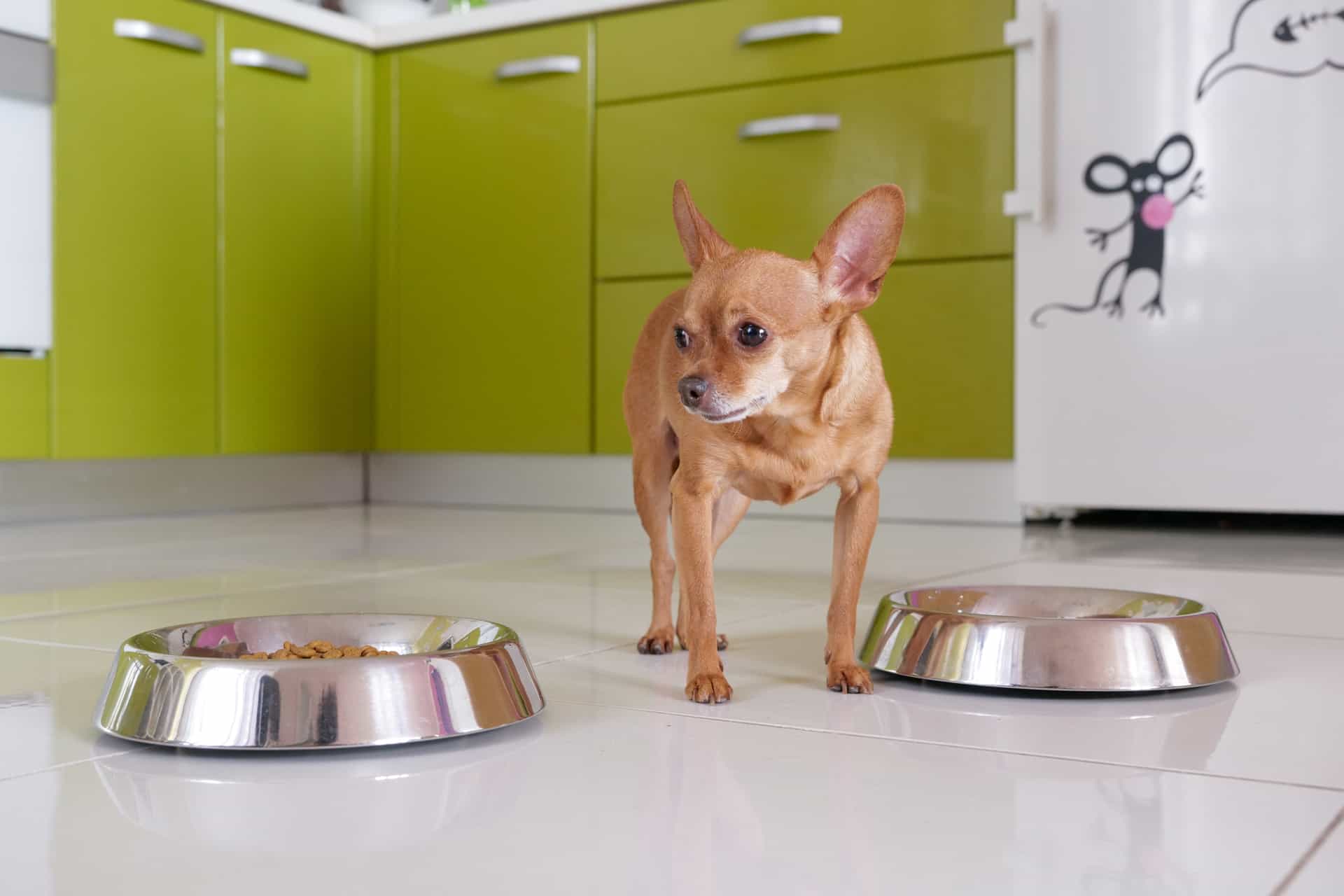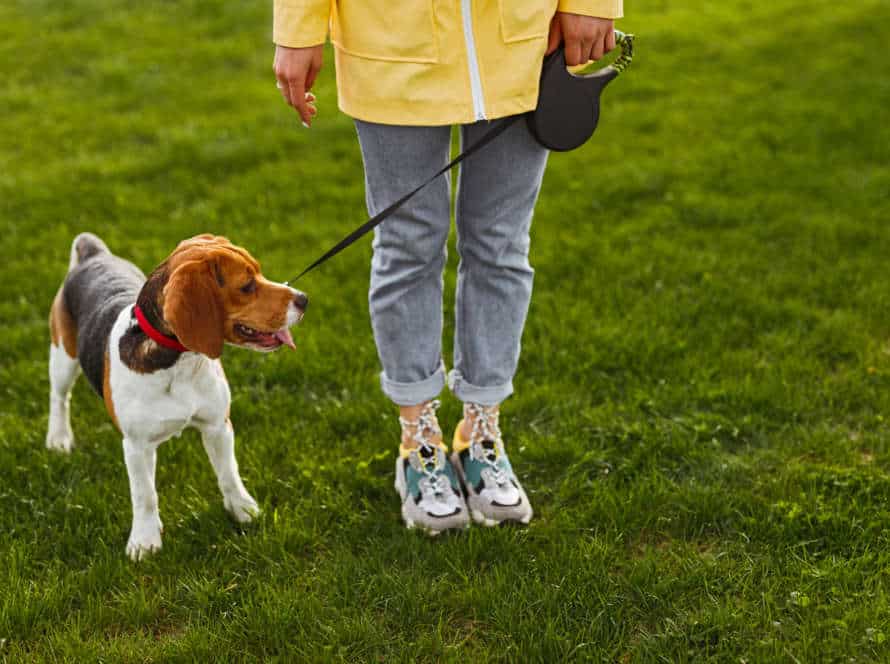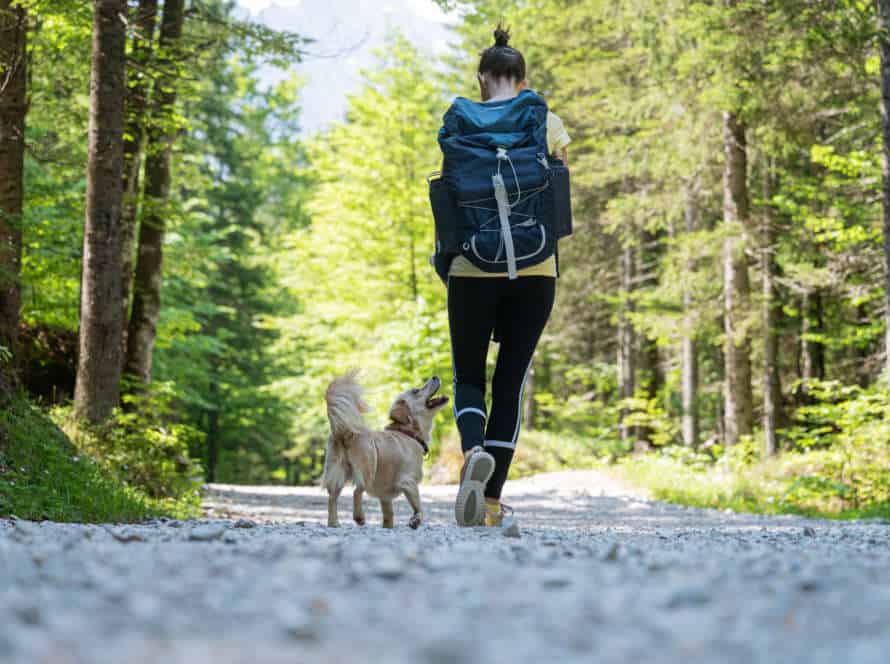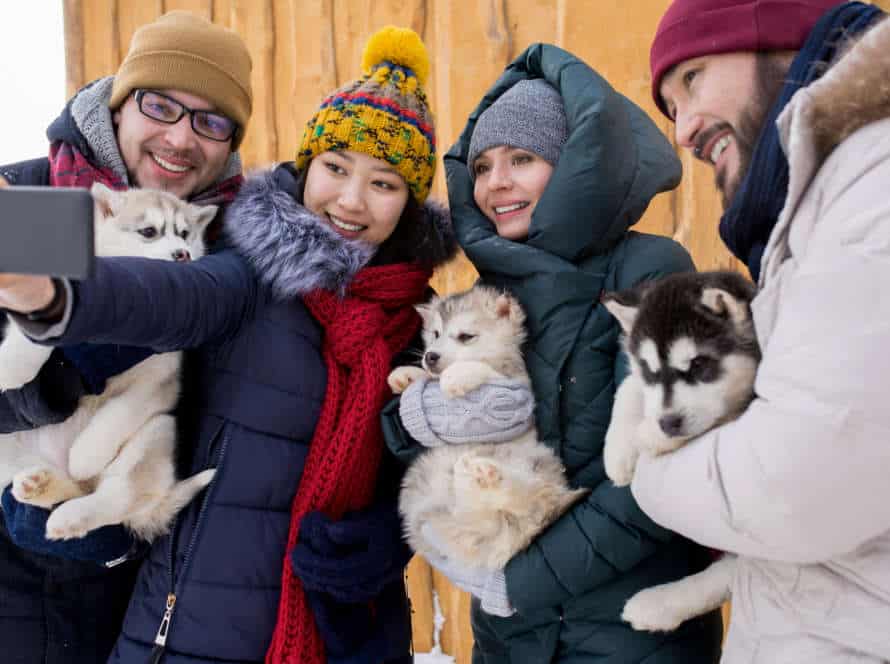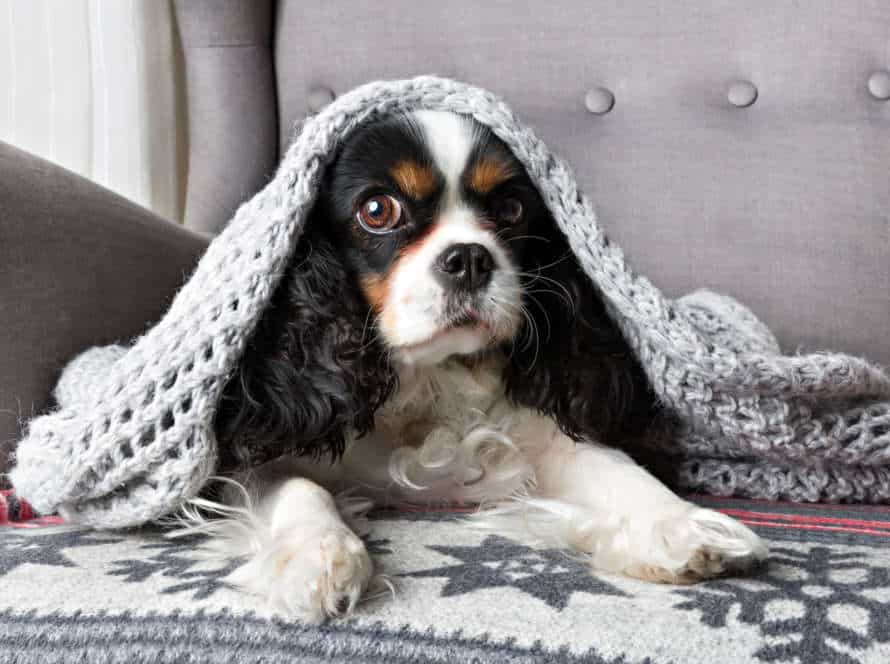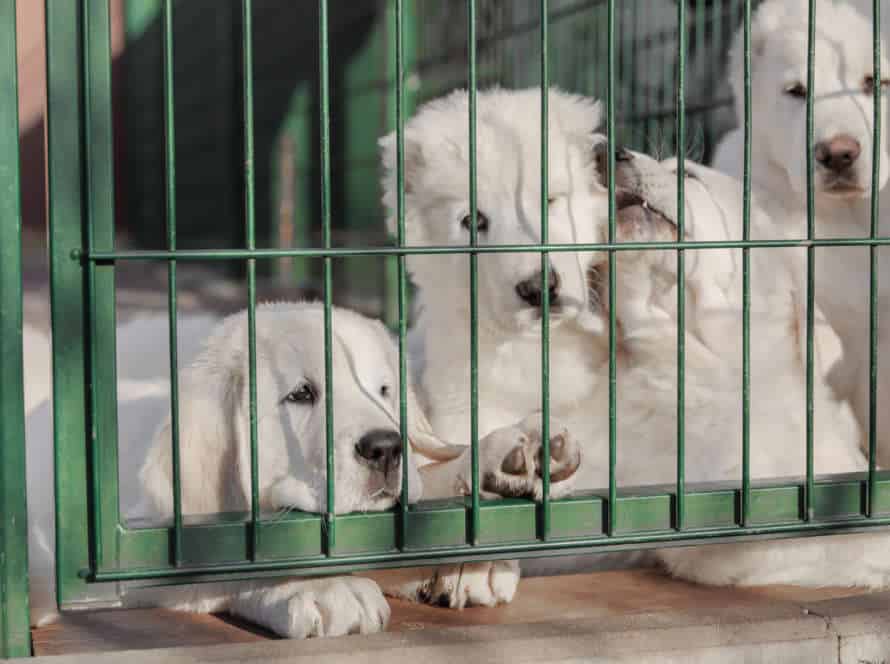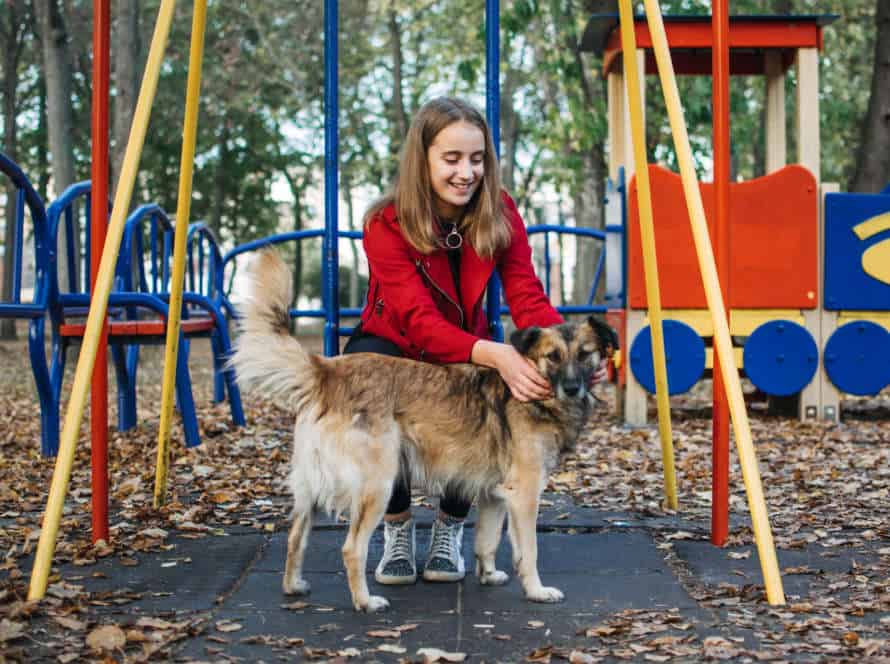Understanding Food Guarding
Food guarding is a natural behaviour that can happen when dogs feel protective of their food. However, it can become a problem when it’s too much and leads to aggression. To address it, first understand what is causing it. Recognizing the warning signs and knowing the triggers are key for reducing the risk of these events.
What is food guarding?
Food guarding is a behavior where dogs become possessive and protective of their food. They might growl, snarl, or even bite near it. It’s important to tackle this behavior. Here’s how:
- Respect their space while they’re eating. Don’t approach.
- Throw them a treat as you approach.
- Give a high-value treat or toy when preparing their food.
- Increase proximity to them while eating with positive reinforcement.
- Get help from a pro if the guarding persists.
By following these steps, you can keep yourself and your dog safe, and have a happy mealtime experience.
Why do dogs food guard?
Dogs guard food for different reasons, like fear, dominance, or protecting resources. It’s an instinctive habit that’s necessary for their wild lives.
To handle food guarding, there are strategies you can use. Desensitization, counter-conditioning, and positive reinforcement training.
- Desensitization means showing your dog food and slowly increasing the distance between people and other animals, to reduce stress.
- Counter-conditioning is replacing the bad feelings with good ones. Like rewarding your dog for good behavior, and creating a relaxed atmosphere at meal times.
- Positive reinforcement training means making sure your dog enjoys and is rewarded for sharing food. This reinforces that there’s enough food for everyone.
Handling food guarding is essential to keep your dog and family safe. It also makes sure mealtime is stress-free.
Different types of food guarding behaviors
Food guarding is a common instinct in dogs. It can range from mild to severe. Pet owners should be aware of these food guarding behaviors:
- Growls, snarls, or snaps when someone is near their food bowl.
- Runs away or hides food when someone tries to take it.
- Becomes still and rigid while eating.
- Acts defensively when someone walks close by.
- Shows aggression when someone approaches food or treats.
To help with food guarding, create a positive association with humans being near food. Give the dog a high-value treat, like chicken or cheese, when someone approaches their food bowl. Gradually decrease the distance between them, with patience and consistency. Over time, food guarding behaviors can improve.
Pro tip: If the issue is serious, get help from a professional dog trainer or behaviorist.
Identifying Food Guarding in Your Dog
Food Guarding–where a pup guards their food from others–is common among canines. This can be a worry for owners. Spotting early signs of food guarding can make a safer environment for everyone. Here are some of the warning signs to watch out for:
Signs of food guarding
Could your pup be food guarding? Look for these signs:
- Growling, snarling, or snapping when approached while eating.
- Eating too fast or not at all when around other animals or people.
- Stiff body and tense facial expressions while eating.
- Protecting food, toys, or other things from others.
- Appearing agitated or overly concerned about food.
If you spot any of these, it’s time to get help. A trainer or vet can help. Strategies like desensitizing your dog to food-related things, teaching healthy eating habits, and creating consistent, positive routines can address food guarding behavior.
Recognizing triggers for food guarding behavior
Recognizing what triggers food guarding behavior in your pup is essential.
Here are some common triggers:
- Fear: Dogs may act this way if they worry about losing food/treats.
- Competing for resources: If other pets/dogs are around, guarding food could happen.
- Past experience: If food has been scarce or they’ve had to compete for it, guarding might be a coping mechanism.
- Genetics: Certain breeds tend to guard food due to their hunting instincts.
Recognize the triggers and address them with training or behavior modification. This will help reduce food guarding and make the home safe.
The importance of early intervention
Identifying and addressing food guarding behavior in dogs is crucial. It’s a natural defensive behavior that some dogs do to protect their food or treats from other animals or humans, and it can lead to aggression or biting.
Signs of food guarding may be growling, barking, snarling, snapping, or biting when touched or approached while eating. These behaviors can get worse quickly, and can be dangerous for the dog and its owner.
If you see any of these signs, act fast. Get help from a professional dog trainer or animal behaviorist who can teach you effective techniques to manage and modify your pup’s behavior safely and positively.
Food guarding can be solved with patience, understanding, and training. Early intervention can stop things from getting worse and help you and your pup have a successful outcome.
Strategies for Addressing Food Guarding
Pet owners often experience food guarding. But, with some patience and persistence, it can be managed. Utilize certain strategies to gradually decrease your pet’s guarding behaviors. This article explains these strategies and how to use them. Discover how to help your pet become more comfortable around food and people.
Prevention tactics for food guarding
Food guarding can be tricky to manage in dogs. But, there are tactics to reduce or get rid of this problem. Here are a few strategies you can use:
- Socialize your puppy early.
- Use high-value treats as rewards.
- Don’t free-feed your dog.
- Teach your dog to take/drop/give food on command.
- If guarding behavior continues or increases, consult a professional.
By using these tactics, you can help ensure your pup does not develop food guarding. And, maintain a cheerful and healthy relationship with your furry pal.
Desensitization exercises for food guarding
Desensitization workouts for food guarding are necessary for tackling this behavior in your pup. Here’s what you can do:
- Leash your dog and put a bowl of food in front of them. Stand a bit away so they’re aware of you but not reactive.
- Slowly move closer. Stop before they show any signs of unease or guarding. Toss a treat and move back.
- Gradually reduce the gap between you and your pup until you can be next to them while they eat without them feeling threatened.
- Repeat regularly till they’re relaxed with you being near them when they eat.
Pro tip: If you can’t handle food guarding on your own, seek help from a professional. It may be a complex issue that needs expertise.
Counter-conditioning techniques for food guarding
Counter-conditioning is a great way to tackle food guarding in dogs. It changes the emotion that a dog has when people are near their food bowl. This reduces or stops the guarding.
Here are tips for counter-conditioning food guarding:
- Move to a distance the dog is at ease with.
- Throw a yummy treat, like cooked chicken, into the bowl. Then, step back a bit.
- Gradually get closer to the bowl as the dog feels more comfortable.
- Keep throwing treats into the bowl as you come closer, creating a positive link between people and the food bowl.
It’s important to get help from a professional dog trainer. Food guarding can be serious, so it needs special treatment.
Addressing Food Guarding with Multiple Dogs
Food guarding with multiple dogs? Challenging and rewarding! It’s important to understand why it’s happening and find the right strategies. This article will share some effective strategies for this situation.
Managing feeding times with multiple dogs
Multiple dogs needing to eat can be tricky, specially if they are prone to guarding food. To make sure they get the nutrition they need and avoid aggressive behavior at mealtime, here’s what you can do:
- Separate them in different places or rooms to avoid competition.
- Use slow-feeding bowls or food puzzles for a longer mealtime and to keep them from overeating.
- Train them to wait for permission to come near their food dishes.
- Have a routine for feeding time and be consistent; this will give your dogs security.
- Reward them with praise and treats for good behavior during mealtime.
Using these strategies and making sure your dogs are well-fed and happy will help eliminate food guarding and make eating a pleasant experience for everyone!
Feeding dogs in separate rooms or areas
Feeding dogs in individual rooms or spots is a great method to take on food guarding in multiple dogs in a one home. It stops food issues and makes a peaceful eating atmosphere for all pets.
Here are some hints for feeding dogs in single rooms or spots:
- Pick an allocated feeding area for each pup, be it a single room or a corner of the house.
- Feed the dogs at different times or one inside and one outside.
- Use walls such as baby gates or closed doors to separate the feeding places.
- Make sure each dog has a pleasant and secure spot to eat without feeling worried by other animals.
- Gradually, with positive reinforcement and behavior modification training, you may be able to reintroduce feeding the dogs in the same room or area.
Training and socialization exercises for multiple dogs with food guarding behavior
Challenging one pup’s food guarding can be tricky, but it’s even tougher when you have multiple dogs. To help with food guarding in your pack:
- Feed each pup separately in separate rooms or crates to avoid competition.
- Play trading games so they learn to give up their food or toys for something better without guarding.
- Teach them “wait” or “stay” and reward them for waiting nicely.
- Do obedience training together, to show you’re the leader and lessen competition.
- Ask a dog trainer who specializes in multiple dogs’ food guarding.
Remember, supervise your fur-babies at mealtimes! Don’t punish them for guarding – this could make it worse.
When to Consult a Professional
Food guarding is a serious issue in dogs. Safety concerns can arise and it can take a long time to address. Consulting a professional is beneficial in these cases. Should you consult one? How to make the most of their expertise? Here are the answers.
Identifying when food guarding is beyond your skill level
Knowing when food guarding is too much for you to handle can help you decide if you should see a professional about your dog’s behavior. Here are some clues that suggest you need help:
- Your pup gets aggressive with you or other pets if they come near its food bowl, even if it’s empty.
- It growls, bares teeth, or snaps when someone tries to take its food bowl away.
- It stiffens up when eating and looks really alert.
- It seems anxious or upset when someone is near its food.
Seeing a professional, like a dog behaviorist, will give you tips to manage food guarding and make your home safer and more pleasant for you and your pet.
Finding a qualified professional to address food guarding behavior
Food guarding behavior in dogs can be a real problem – one that needs professional help. To solve it, pet owners should find a qualified animal behaviorist or trainer. Here’s how:
- Find one with experience in treating food guarding.
- Get recommendations from other pet owners, vets, or animal rescue orgs.
- Have an initial consultation with the professional. Discuss the behavior and their approach.
- Observe their methods during the consultation. Make sure they match your beliefs and values.
- No pro can guarantee success. Behavior changes may take time and effort.
What to expect from professional intervention
Professional help for food guarding in dogs needs a full assessment of their behavior. Afterward, a special training program is created for them.
Here’s what you can expect:
- A qualified dog trainer or behaviorist will first observe your dog and its triggers in a controlled environment.
- They will then make a plan suited to your pup’s individual needs, which may involve desensitizing and counter-conditioning.
- You will get particular instructions on how to do the training at home. The trainer will monitor your progress and adjust the program as necessary.
With professional help and regular training, you should see an improvement in your dog’s food guarding behavior eventually.
Frequently Asked Questions
1. What is food guarding in dogs?
Food guarding in dogs is a behavior in which they become protective or aggressive while guarding their food or treats.
2. Why do dogs exhibit food guarding behavior?
Dogs may exhibit food guarding behavior due to fear, anxiety, or a need to establish dominance. It can also be due to their natural instincts as pack animals.
3. How can you address food guarding in dogs?
You can address food guarding in dogs with strategies like training them to associate positive things with people being nearby while they eat, gradually increasing your presence while they eat, and using a buckle collar or head halter to control their behavior during feeding.
4. Is it possible to prevent food guarding behavior in dogs?
It is possible to prevent food guarding behavior in dogs by training them from an early age to be comfortable with people being near their food, treats, and toys. Consistency and positive reinforcement are key when it comes to training.
5. Can food guarding be a sign of a medical issue in dogs?
While food guarding is primarily a behavior issue, it can be a sign of a medical issue if the dog becomes more aggressive or protective than usual. A veterinarian should be consulted in such cases.
6. Are there specific breeds that are more prone to food guarding behavior?
Some breeds may be more prone to food guarding behavior due to their genetic traits, such as hunting dogs or working breeds. However, any dog can develop food guarding behavior regardless of their breed or background.

